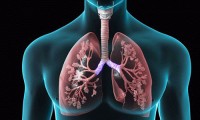-
In boost to Abbott, spinal-cord implants emerge as alternative to pills
- Source: Crain's Chicago Business
- 562
- January 4, 2018
-
Scientists Unveil the First Portable Bionic Hand With a Sense of Touch
- Source: Futurism
- 434
- January 4, 2018
-
Starting new COPD inhaler tied to heart attack risk
- Source: Reuters
- 525
- January 3, 2018
-
Artificial Intelligence Pilot Project to look for Suicide Warning Signs across Canada
- Source: The Canadian Press
- 393
- January 3, 2018
-
The Healthcare Technology Winners of 2017
- Source: hcanews
- 492
- January 1, 2018
-
Top 5 Digital Health Trends——A Look Back At 2017
- Source: forbes
- 792
- January 1, 2018
-
More Pregnant Women Are Using Marijuana, But We Still Don’t Know The Risks
- Source: Science Alert
- 402
- December 29, 2017
-
Scientists Discover an Entirely New Biological System That Regulates Body Fat
- Source: Science Alert
- 573
- December 29, 2017
-
New understanding of why cancer cells move
- Source: medicalxpress
- 380
- December 28, 2017
-
Neurons’ sugar coating is essential for long-term memories
- Source: medicalxpress
- 409
- December 28, 2017
your submission has already been received.
OK
Subscribe
Please enter a valid Email address!
Submit
The most relevant industry news & insight will be sent to you every two weeks.













